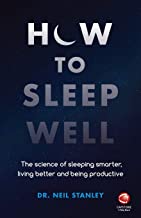Circadian Rhythm
A circadian rhythm (/sərˈkeɪdiən/), or circadian cycle, is a natural, internal process that regulates the sleep–wake cycle and repeats roughly every 24 hours. It can refer to any process that originates within an organism (is endogenous) and responds to the environment (entrained by the environment).
Cluster Number:
Wiki Number: W042
Diagnosis: Circadian Rhythm Sleep Disorder
US Patients:
World Patients:
Sex Ratio:
Age Onset:
Brain Area: suprachiasmic nucleus
Symptoms: falling asleep in daytime; biological clock misaligned with circadian rhythm.
Progression:
Causes: intrinsic: delayed, advanced, irregular or blindness; extrinsic: shift–work, jet-lag; Alzheimer’s often destroys patterns
Medications: None listed.
Therapies: chronotherapy-delay to normalize; light therapy; hypnotics; melotonin in evening; dark therapy
Youtube Video: Circadian Rhythm Disorders
Amazon or Library Book: Sleep . . . Natural Remedies
Amazon or Library Book:
How to Sleep Well
Click the book to link or order from Amazon.
Click the book to link or order from Amazon.


